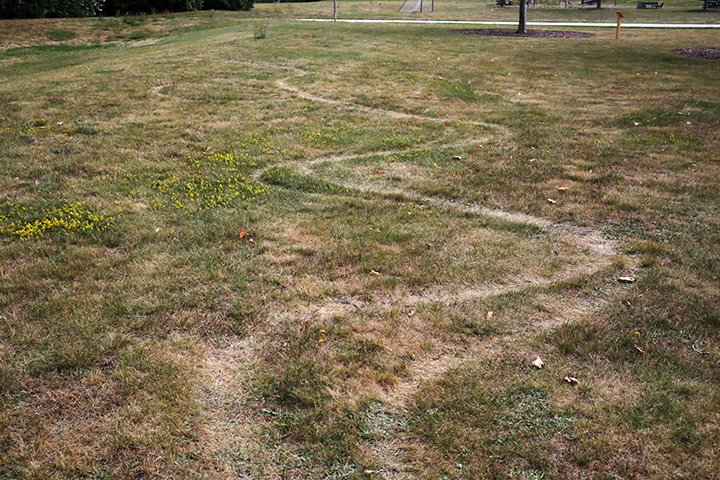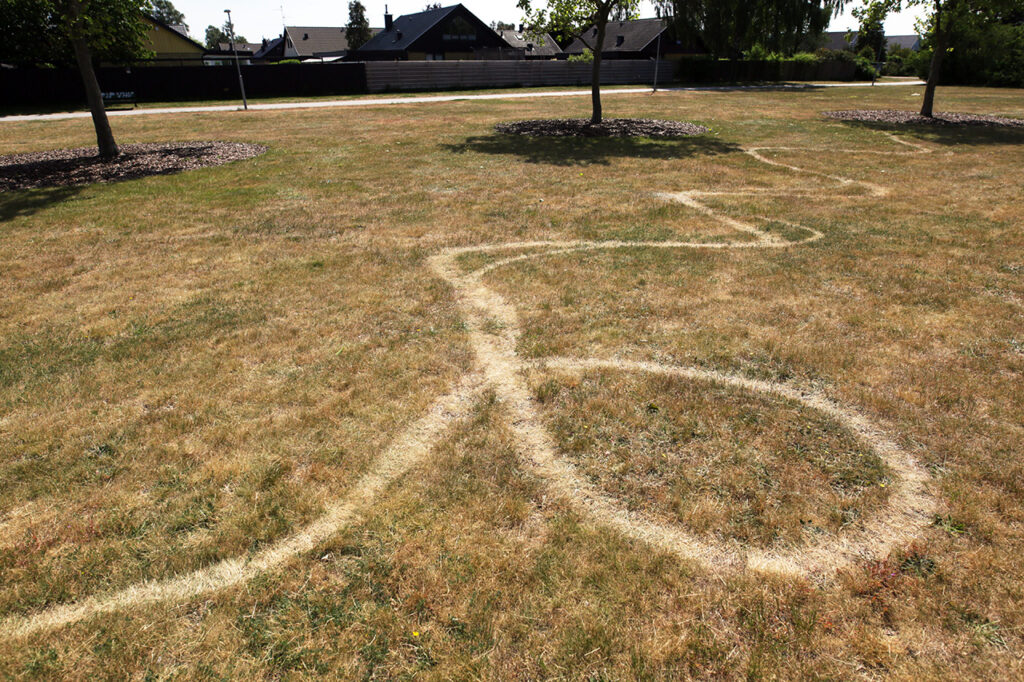I am on a patch of grass in a residential area in Löddeköpinge, Sweden. I walk.
A passing man in his prime says the following: ”I have lived here in Löddeköpinge all my life. On this patch of grass, nothing has ever happened”.
The man is right, nothing is happening here. Or? Maybe he’s wrong after all, because there’s a lot going on here. He came by with his dog, for example. It may not be world news that unfolds here, but there are plenty of small everyday events. Children play on the playground. Pupils are heard from the nearby schools. People ride bikes. Many people walk their dogs here. People walk. Just like I do.

Bigger things have happened too. The Sjöbo railway’s route has gone right here. During World War II, Danish Jewish refugees arrived at Barsebäcksstrand and were transported further inland by rail. Perhaps they looked out at the landscape right here, a glimpse of freedom, but at the same time with a concern about what was left behind and the uncertainty of the future. Löddeköpinge has for centuries been a hub, a place of trade where many sought or passed through from different directions. They have followed roads or formed new paths.
As a visual artist, I mainly work with drawing. In this work I draw by walking. I walk over the surface of the ground until a path forms, i.e. a line. That’s what a drawing artist does, draws lines. The stretch forms an approximately 40-meter-long crooked track that contrasts with a smoothly curved, invisible curve along which five plane trees are planted on the site. The track shows the average temperature in Löddeköpinge every week, from January and on. Where the line is close to the trees, it was colder during that period, and if the line is further from the trees, it was warmer during that period. Going forward, I will extend the length of the curve with the past week’s average temperature. I will do it until the beginning of November, when the exhibition period ends. After that, the path will slowly disappear.
I walk on and off until a trail forms. The place is a flat, square lawn about 100 x 70 meters with five plane trees on it. The surface I step on is laid out along the five trees and is approximately 40 x 15 meters.
Plane trees provide shade and coolness and are therefore popular during hot summer days in more southern latitudes. Temperatures affect us and the climate in different ways. This work relates to data in the form of measured temperatures, but the values are used to ask questions about being in the world. Living necessarily means leaving a mark. Sometimes the traces are clear, sometimes they are barely visible. Perhaps the line drawn by walking is an attempt to embody time, both past and future. The future is always partly uncertain. It suits the investigative and generative nature of this work. The work literally grows gradually, based on what has been. Finally, after the exhibition period, the track will slowly disappear. Nature’s vegetation eventually takes over.
